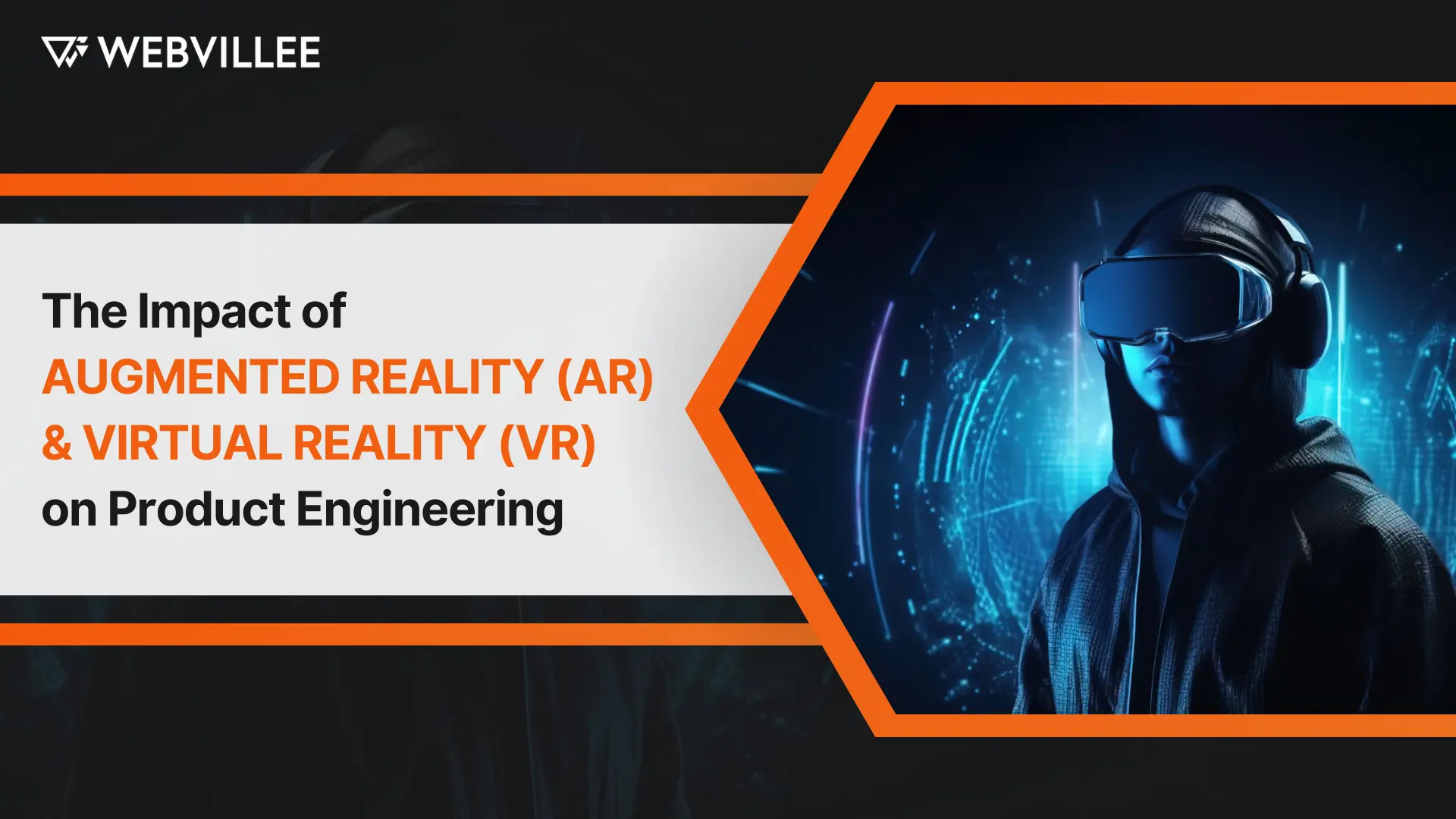Augmented Reality (AR) and Virtual Reality (VR) are not just buzzwords; they are transforming the way businesses approach product engineering. These immersive technologies are unlocking new possibilities, from enhancing design and prototyping to revolutionizing manufacturing, operations, and customer engagement.
This blog explores the profound impact of AR and VR on product engineering, uncovering how these innovative technologies are reshaping the future of design, collaboration, and user experience. Whether you’re a product engineer, designer, or business leader, understanding and embracing the potential of AR and VR is crucial for staying competitive, driving innovation, and achieving sustainable growth in a digital-driven marketplace.
Understanding Augmented Reality (AR) and Virtual Reality (VR)
What is Augmented Reality (AR)?
Augmented Reality (AR) overlays digital information, such as images, videos, or 3D models, onto the real world, enhancing the user’s perception and interaction with their environment. AR technology typically relies on devices like smartphones, tablets, or AR glasses to deliver immersive experiences that blend digital content with the physical world.
What is Virtual Reality (VR)?
Virtual Reality (VR) immerses users in a completely digital environment, simulating realistic sights, sounds, and interactions through specialized VR headsets or goggles. Unlike AR, which augments the real world, VR creates a simulated reality that users can explore and interact with, often providing a fully immersive and interactive experience.
Transforming Design and Prototyping with AR and VR
Enhancing Visualization and Conceptualization
AR and VR technologies empower product engineers and designers to visualize concepts, prototypes, and final products in a virtual space, facilitating better understanding, evaluation, and refinement of designs. By immersing themselves in a 3D environment, engineers can explore different design iterations, test functionality, and identify potential issues before moving to physical prototyping or production, saving time and resources.
Streamlining Collaboration and Communication
AR and VR platforms enable remote collaboration and communication among cross-functional teams, stakeholders, and clients, regardless of geographical location. By sharing virtual prototypes and simulations in real-time, teams can collaborate more effectively, exchange feedback, and make informed decisions collaboratively, fostering innovation and accelerating the product development cycle.
Improving User Experience and Engagement
AR and VR technologies offer unparalleled opportunities to enhance user experience and engagement by creating immersive, interactive, and personalized experiences. Whether it’s simulating product usage, providing virtual product tours, or offering interactive user guides, AR and VR enable businesses to engage customers more effectively, showcase product features, and differentiate their offerings in the marketplace.
Optimizing Manufacturing and Operations with AR and VR
Enhancing Training and Skill Development
AR and VR-based training simulations enable employees to learn new skills, procedures, and processes in a safe, controlled, and immersive environment. By replicating real-world scenarios and challenges, these training modules facilitate experiential learning, improve retention, and enhance employee proficiency, reducing training costs and accelerating onboarding.
Improving Maintenance and Repair Operations
AR technology can assist technicians and maintenance personnel in identifying, diagnosing, and repairing equipment and machinery more efficiently. By overlaying digital information, such as schematics, instructions, or real-time data, onto physical assets, AR enhances situational awareness, streamlines troubleshooting, and guides users through complex repair processes, minimizing downtime and optimizing operational efficiency.
Enabling Predictive Maintenance and Optimization
VR simulations and AR-based monitoring systems enable businesses to monitor, analyze, and optimize equipment performance and maintenance schedules proactively. By leveraging sensor data, predictive analytics, and machine learning algorithms, these technologies provide insights into equipment health, identify potential issues, and recommend preventive measures, enabling businesses to maximize uptime, extend asset lifespan, and reduce maintenance costs.
Enhancing Customer Engagement and Marketing with AR and VR
Creating Immersive Brand Experiences
AR and VR offer innovative ways to create immersive and interactive brand experiences that captivate, engage, and resonate with customers. Whether it’s through virtual product demonstrations, interactive storytelling, or immersive marketing campaigns, these technologies enable businesses to showcase their products and services in compelling and memorable ways, driving brand awareness, loyalty, and customer engagement.
Personalizing Customer Interactions and Shopping Experiences
AR and VR technologies enable businesses to personalize customer interactions and shopping experiences by offering virtual try-ons, personalized product recommendations, and interactive shopping assistants. By leveraging customer data, preferences, and behaviors, these technologies facilitate personalized and tailored experiences that enhance satisfaction, loyalty, and conversion rates, fostering long-term customer relationships and driving revenue growth.
Overcoming Challenges and Adopting AR and VR in Product Engineering
Integration and Compatibility
One of the main challenges businesses face when adopting AR and VR in product engineering is integrating these technologies with existing systems, tools, and workflows. Ensuring compatibility, interoperability, and seamless integration requires strategic planning, technical expertise, and investment in infrastructure and training to support AR and VR deployment effectively.
Cost and Investment
While AR and VR offer transformative benefits, they also require significant investment in hardware, software, development, and maintenance. Balancing cost considerations with expected ROI, scalability, and long-term value is crucial for businesses to justify and prioritize AR and VR initiatives and secure executive buy-in and investment support.
User Adoption and Experience
Successful adoption of AR and VR in product engineering depends on user adoption, acceptance, and satisfaction. Providing intuitive interfaces, user-friendly experiences, and comprehensive training and support is essential to encourage user adoption, minimize resistance to change, and ensure a positive and productive user experience across all levels of the organization.
Conclusion
Augmented Reality (AR) and Virtual Reality (VR) are reshaping the landscape of product engineering, offering transformative opportunities to innovate, collaborate, and engage stakeholders throughout the product lifecycle.
From design and prototyping to manufacturing, operations, and customer engagement, AR and VR technologies empower businesses to optimize processes, enhance productivity, improve user experience, and drive sustainable growth in today’s competitive and digital-driven marketplace.
While challenges remain, with strategic planning, investment, and commitment to innovation and continuous improvement, businesses can harness the power of AR and VR to unlock new possibilities, differentiate their offerings, and stay ahead of the curve in the evolving digital landscape.
